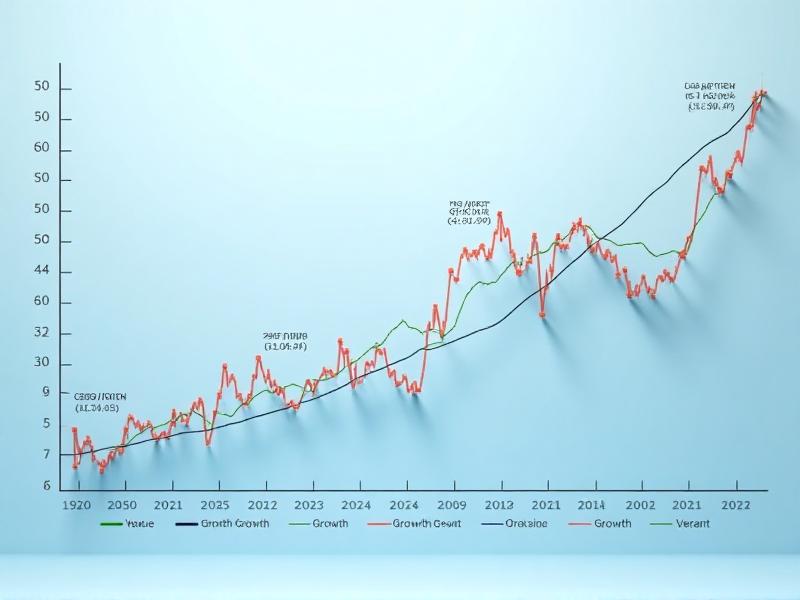
How to Use Fintech for Debt Management

The Role of Artificial Intelligence in Portfolio Management

Social Security and Cost-of-Living Adjustments (COLA)

Unforgettable Pilgrimages: Top Temples in Andhra Pradesh
The Role of Artificial Intelligence in Portfolio Management
Apr 24, 2025 By Juliana Daniel
The Evolution of Portfolio Management
Portfolio management has undergone significant transformations over the decades, evolving from traditional methods to more sophisticated approaches. Initially, portfolio management relied heavily on manual analysis and human intuition. Financial advisors would sift through vast amounts of data, making decisions based on experience and market trends. However, this approach was time-consuming and prone to human error.
With the advent of technology, the field began to shift. The introduction of computer algorithms and quantitative models marked the first major leap. These tools allowed for faster data processing and more accurate predictions, but they were still limited by the scope of human input. The real game-changer came with the integration of Artificial Intelligence (AI). AI brought with it the ability to analyze massive datasets, identify patterns, and make predictions with a level of precision that was previously unimaginable.
Today, AI-driven portfolio management systems are capable of processing real-time data from multiple sources, including social media, news outlets, and financial reports. These systems can adapt to changing market conditions, optimize asset allocation, and even predict future trends. The evolution from manual methods to AI-driven solutions has not only increased efficiency but also democratized access to sophisticated portfolio management tools, making them available to a broader audience.
How AI Enhances Decision-Making in Portfolio Management
One of the most significant advantages of AI in portfolio management is its ability to enhance decision-making processes. Traditional methods often rely on historical data and human judgment, which can be biased or outdated. AI, on the other hand, can analyze both historical and real-time data, providing a more comprehensive view of the market.
Machine learning algorithms, a subset of AI, are particularly effective in this regard. These algorithms can identify patterns and correlations that may not be apparent to human analysts. For example, an AI system might detect that a particular stock tends to perform well under specific economic conditions, such as low-interest rates or high consumer confidence. This insight can then be used to make more informed investment decisions.
Moreover, AI can process unstructured data, such as news articles, social media posts, and even satellite images, to gauge market sentiment or predict economic trends. This capability allows portfolio managers to stay ahead of the curve, making proactive rather than reactive decisions. By leveraging AI, portfolio managers can reduce risks, optimize returns, and achieve a more balanced and diversified portfolio.
The Role of Machine Learning in Predictive Analytics
Machine learning (ML) plays a pivotal role in predictive analytics within portfolio management. Predictive analytics involves using data, statistical algorithms, and machine learning techniques to identify the likelihood of future outcomes based on historical data. In the context of portfolio management, this means predicting how different assets will perform under various market conditions.
ML algorithms can be trained on vast datasets that include historical prices, trading volumes, economic indicators, and more. Once trained, these algorithms can forecast future asset prices with a high degree of accuracy. For instance, an ML model might predict that a particular stock is likely to increase in value over the next quarter based on patterns observed in the past. This prediction can then inform investment strategies, helping portfolio managers to allocate resources more effectively.
Another critical aspect of ML in predictive analytics is its ability to adapt. Unlike static models, ML algorithms can continuously learn from new data, improving their predictions over time. This adaptability is particularly valuable in volatile markets, where conditions can change rapidly. By leveraging ML, portfolio managers can stay ahead of market trends, making more informed and timely decisions.
AI-Driven Risk Management Strategies
Risk management is a cornerstone of effective portfolio management, and AI has revolutionized this aspect as well. Traditional risk management techniques often involve assessing the probability of adverse events and their potential impact on the portfolio. While these methods are useful, they are limited by the quality and scope of the data available.
AI-driven risk management strategies, on the other hand, can analyze a broader range of data sources, including real-time market data, economic indicators, and even geopolitical events. This comprehensive analysis allows for a more accurate assessment of risk. For example, an AI system might identify that a particular asset is highly sensitive to changes in oil prices or that a portfolio is overexposed to a specific sector. These insights can then be used to adjust the portfolio, reducing potential risks.
Moreover, AI can simulate various scenarios, known as stress testing, to evaluate how a portfolio might perform under different conditions. This capability is particularly valuable in uncertain times, such as during economic downturns or geopolitical crises. By leveraging AI, portfolio managers can develop more robust risk management strategies, ensuring that their portfolios are better prepared to withstand adverse events.
Ethical Considerations in AI-Powered Portfolio Management
While AI offers numerous benefits in portfolio management, it also raises important ethical considerations. One of the primary concerns is the potential for bias in AI algorithms. If the data used to train these algorithms is biased, the resulting predictions and decisions may also be biased. This could lead to unfair or discriminatory practices, such as favoring certain stocks or sectors over others without a valid rationale.
Another ethical issue is the transparency of AI systems. Many AI algorithms, particularly those based on deep learning, operate as "black boxes," meaning that their decision-making processes are not easily understandable by humans. This lack of transparency can make it difficult to hold AI systems accountable for their decisions, raising concerns about fairness and accountability.
Moreover, the use of AI in portfolio management can lead to job displacement. As AI systems become more capable, there is a risk that human portfolio managers may be replaced by automated systems. This could have significant social and economic implications, particularly for those whose livelihoods depend on traditional portfolio management roles. It is essential to address these ethical considerations to ensure that the benefits of AI are realized without compromising fairness, transparency, and social responsibility.
The Future of AI in Portfolio Management
The future of AI in portfolio management is incredibly promising, with numerous advancements on the horizon. One of the most exciting developments is the integration of AI with other emerging technologies, such as blockchain and quantum computing. These technologies have the potential to further enhance the capabilities of AI, enabling even more sophisticated data analysis and decision-making.
Another area of growth is the development of explainable AI (XAI). As mentioned earlier, one of the challenges with current AI systems is their lack of transparency. XAI aims to address this issue by creating algorithms that can explain their decision-making processes in a way that is understandable to humans. This development could help to build trust in AI systems and ensure that they are used responsibly.
Additionally, the democratization of AI in portfolio management is likely to continue. As AI tools become more accessible, smaller investors and financial advisors will be able to leverage these technologies to manage their portfolios more effectively. This trend could lead to a more level playing field, where sophisticated portfolio management tools are available to a broader audience, rather than being limited to large institutions.

Discovering the Charm of Deià: A Travel Guide to Mallorca’s Hidden Gem

How Blockchain is Revolutionizing Finance

How to Invest in Real Estate Without Buying Property

How to Use Digital Wallets for Secure Transactions

The Pros and Cons of Digital Banking

The Role of AI in Financial Planning

How to Use Robo-Advisors for Retirement Planning

How to Invest in Value Stocks for Long-Term Gains
Advertisement
